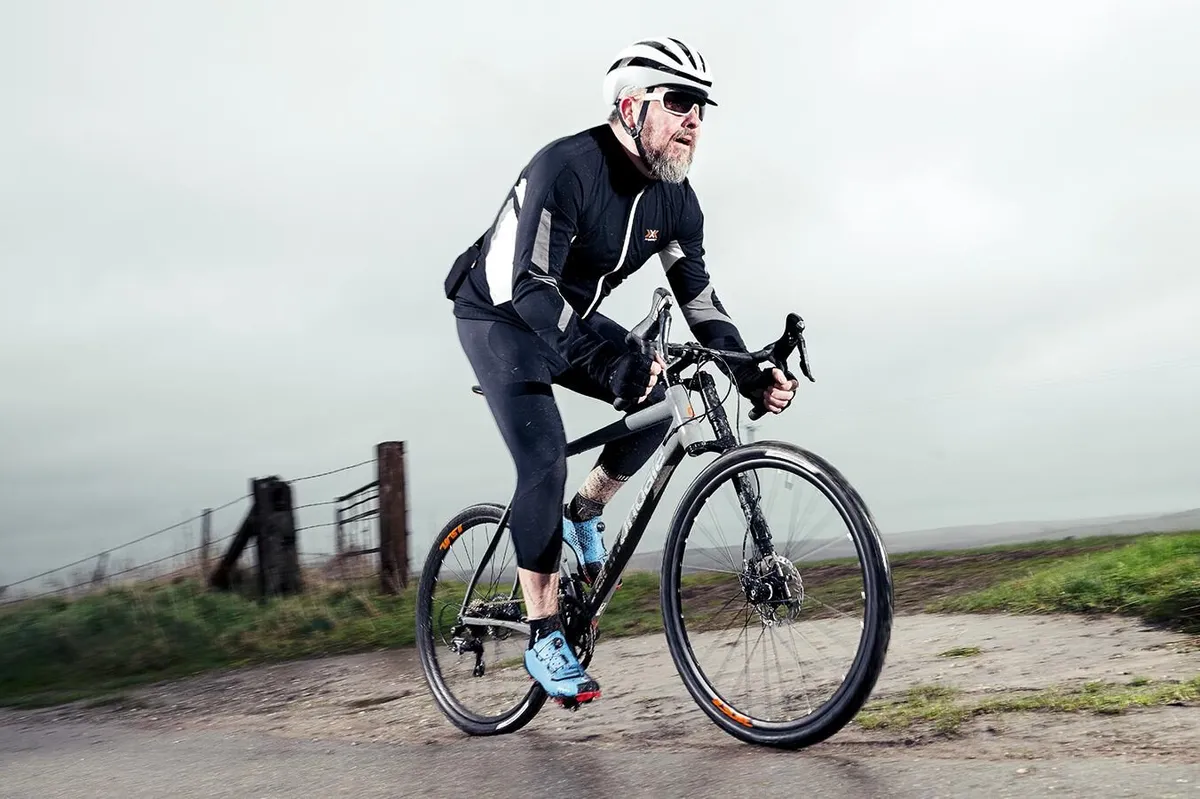The fitter you are, the more training stress or workload your body requires in order to continue to improve your fitness. Of course, proper recovery plays a crucial role in this process.
If your fitness has reached a plateau, then perhaps your training stress is inappropriate to enlist your body’s responsive process of rebuilding molecular structures, or positive adaptations (see 'Understanding the physical effect of training on the body,' below). But what to do?
Well, firstly we need to consider the three elements that make up training stress.
- Intensity is how hard we are riding, both at any instant, during parts of our ride (e.g. up that hill) or for the ride as a whole. Intensity is often expressed in subjective terms (e.g. as a rating of perceived exertion), but is most directly and instantly measured in terms of power output (wattage).
- Duration is how long we ride for (hours per ride, per week or per year), but is also the time spent at particular intensities.
- Frequency refers to how often we ride (e.g. four days per week), but also how often within a ride we undertake certain efforts (e.g. I rode hard up that 5-minute hill four times today). Frequency also indicates the level of recovery time available.
The intensity at which we ride determines the type of training adaptations that occur, and is the most essential element of training to understand.
6 ways to vary training stress and increase fitness
1. Cause and effect
The elements of training stress (intensity, duration, and frequency) are interlinked, so that when you vary one, you must consider the others. For example, you can increase the intensity at which you ride but you may have to reduce the duration so as not to increase the overall training stress too quickly.
2. Change the activity
When you are looking to escape your current fitness plateau, a change in the training stimulus is in order. Not only is a ‘change up’ good for your body, it’s also good for the mind (it needs training and stimulation too).
3. Change your routine
If the training you’ve been doing is no longer improving your fitness, then change your training!
4. Allow greater recovery
Perhaps you are carrying too much long term fatigue and need an opportunity to allow your body and mind to recover and rebuild. So reduce the duration and frequency (and maybe even intensity) of rides for a week or so. You may only need a few days, but sometimes you might need longer.
5. Change your focus
Maybe you’ve been diligently working on improving your fitness for time trials through lots of tempo and time trial pace workouts, but your speed is no longer improving. It’s likely your training is no longer stimulating the adaptations important for time trial riding (e.g. increased power at lactate threshold) and so a change of training focus is needed.
Perhaps swapping your workouts to a block of shorter but higher intensity intervals is needed for a few weeks to stimulate other important physiological changes (such as increasing your oxygen transport capacity and Maximal Aerobic Power).
Just be careful though, increasing training stress simply by adding duration and/or frequency is not always the answer, especially if you are already riding more than 10 hours per week. Quality over quantity of workouts is usually a far better solution.
6. Learn from your training
Knowing what works for you takes experience and experimentation. Keep a training diary, look for patterns in your training, noting what’s working and what’s not, and don’t be afraid to look at altering the elements of training stress. Your body will thank you for it and you might just launch off that fitness plateau.

Understanding the physical effect of training on the body
The body is a remarkable and highly adaptable organism. It is very good at responding to a regular physical stimulus or what we call 'training'. Generally speaking, training is the act of performing some form of physical activity that places a stress or workload on our bodies that is greater than we typically endure in regular life.
So as our fitness increases so does the training stress needed to continue positive adaptation
But sometimes the body stops responding to training. Then what? To understand what to change if this happens to you, you first need to understand a bit about what happens as you train and get fitter.
Our bodies break down molecular structures (such as stored fuels and cellular components) to provide the energy to undertake the activity, and then afterwards comes a period of recovery when the body not only repairs and replaces those broken down molecular structures, but does so in an ‘overshoot’ manner, by building or replacing more than we originally started with.
Different training stresses also induce different types of adaptations and it is these positive adaptations that enable our bodies to better cope with the activity next time.
So as our fitness increases so does the training stress needed to continue positive adaptation.
Of course we need enough recovery to allow those rebuilding processes an opportunity to do their stuff as well as to provide our bodies with the right mix of fuel and nutrients needed for the job, so there is a limit to both the rate at which we can increase training stress and the total stress we can cope with. Getting that workload progression right is the key.
As Greg LeMond said so well, “It never gets easier — you just go faster” .

